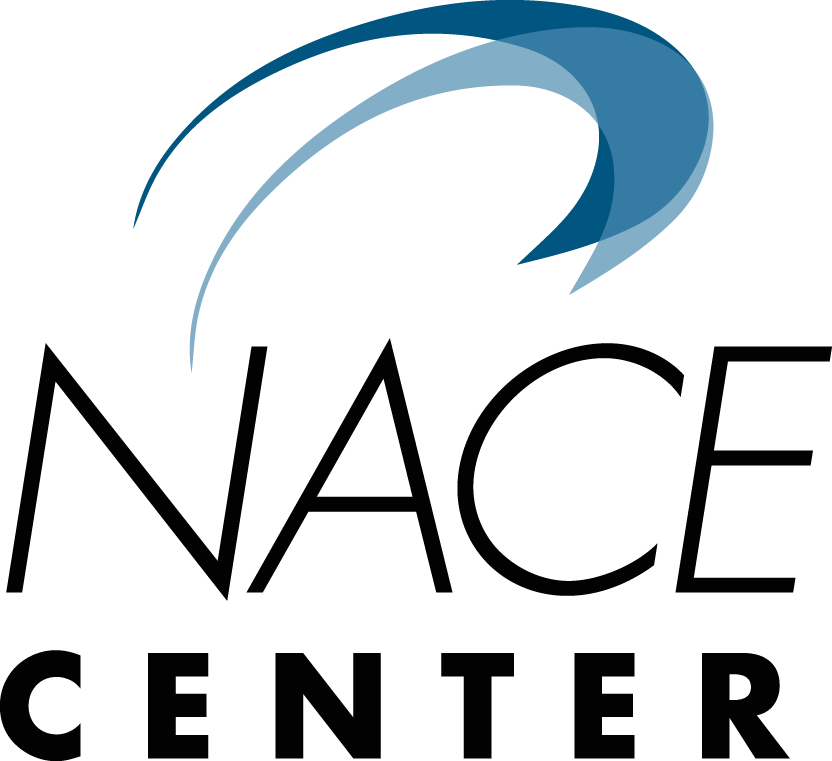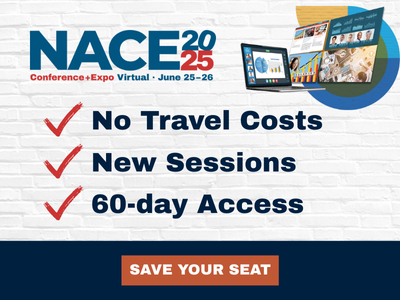NACE Journal, November 2020
During times of economic uncertainty, organizational budgets become tight, and many public institutions face financial shortfalls. Career centers are not immune to these factors. Their budgets often include institutional dollars; revenue from employer recruiting activities; and internal special funding, such as a financial aid allocation for the Job Location and Development (JLD) program.
Institutional funding and employer revenues may fluctuate significantly during an economic downturn, while JLD funding is likely to remain consistent. JLD is paid for through federal dollars allocated by the U.S. Department of Education and is ongoing. JLD is only a fraction of what is possible to tap from the federal government. The U.S. Department of Labor (DOL) allocates billions of dollars annually to support education and career development activities. In 2020, the DOL allocated $2,176,967,000 through only two of its various funding streams to support education and career activities throughout America.1 These funds are public dollars and can be accessed by college and university career centers across the nation to support career and employer services. This article explores how Ohlone College’s career center tapped these two funding streams to help finance career services for its students. Federally financed career development services is guaranteed and ongoing funding mandated by the Workforce Innovation and Opportunity Act (WIOA) and is potentially available to all college and university career centers.
The Federal Workforce Development System
Resources
Workforce Innovation and Opportunity Act: https://www.dol.gov/agencies/eta/wioaWIOA funds for your state: To learn how many dollars are available for career services financed by WIOA in your state, visit https://bit.ly/33XWSwh and select the dollar tables listed. To consider the same funding sources used by Ohlone, select both WIOA Adult Activities Program and WIOA Dislocated Worker Activities Program. WIOA funding is coordinated through the state Employment Development Department (EDD). Check your state’s EDD website for funding available for your region. Regions usually consist of cities, counties, and/or metropolitan areas.
Workforce Development Board: To learn more and to connect with your local leaders who oversee WIOA funding and activities for your region, consider attending a public Workforce Development Board (WDB) meeting. Find your local WDB at https://bit.ly/2HxNYxd.
The federal workforce development system has grown to become a vast network of career services providers that connect individuals to education/training opportunities and career services, while connecting employers to recruiting solutions. In fact, the modern workforce development system has always sought to bridge an educational experience with industry to facilitate careers. Although the federal workforce system and WIOA may consider various factors that constitute success, ultimately the funding hinges largely on a few key performance indicators (KPIs): the number of individuals served; completion of some sort of educational experience if appropriate, e.g., a certificate, degree, or other credential; and, eventually, employment.
Unlike career services in the federal workforce system, career services’ success in higher education is not as formally defined and may vary among institutions. Success may be defined through a combination of metrics, such as the number of students served, student satisfaction rates, obtainment of learning outcomes, number of interviews scheduled, obtainment of a job or internship, and salary. Unlike WIOA, which places a significant focus on the end goal of employment, career centers at colleges and universities generally track various KPIs through first-destination surveys to identify a broader combination of outcomes that may include employment, military, service engagement, entrepreneurship, or transfer/continuing education. There are generally accepted standards of practice, but unlike WIOA, there are no nationally mandated outcomes.
Integrating WIOA Career Services With Higher Education Career Services
There are differences between WIOA career services and career services offered by college and university career centers. However, there are more similarities between the systems than differences. Ultimately, both want the individuals they serve to be successful in their educational programs and, eventually, the workforce.
Is it possible to leverage funding under WIOA to help finance college and university career services while meeting federal mandates? Yes: Ohlone College has been successful in integrating federally financed career services into its environment and meeting WIOA’s mandates. The results are compelling, and the career center budget has grown vastly.
Moreover, in general, WIOA subcontract recipients are granted flexibility in how they can spend their financial allocation. As long as subcontract mandates are met, career centers can use WIOA funding to pay for all career center operations and management/staff expenses, including salaries (student assistants and interns, too), benefits, contractors, technology, subscriptions, professional memberships, facility rentals, office supplies, and more. Successful programs will also include funding to support WIOA-enrolled students who need additional financial assistance; this could mean purchasing clothing, transportation, laptops/tablets, professional computer applications/programs, and more for students. WIOA funding can even be used to help pay for any specialized certificate or license for students that is considered to be an industry-recognized credential.
Integrating the WIOA program into the institution was a team effort and requires buy-in from administrators, staff, and the community. WIOA career services are open to the public. Creating a successful plan requires the career center to be involved with local workforce and economic development stakeholders and to be responsive to the trends and needs of its region. This effort helps promote the presence of the institution and the career center, and it organically generated an ongoing pipeline of both individuals and employers to the institution. Stakeholders were also more inclined to recommend additional funding to the institution for career-related activities.
Ohlone College and the WIOA Subcontract
Ohlone College’s WIOA subcontract was awarded by the Alameda County Workforce Development Board (ACWDB). Ohlone, a public institution of higher education located in the Eastern part of Silicon Valley, with two campuses located in Fremont and Newark, California, serves up to 17,000 students annually.
The funding awarded to Ohlone is identified as two separate funding sources under one federal subcontract: 1) U.S. Department of Labor Employment and Training Administration WIOA Adult Activities and 2) U.S. Department of Labor Employment and Training Administration WIOA Dislocated Worker Activities.
WIOA funding requires eligible individuals who wish to receive ongoing 1:1 career support to enroll for services by completing an application and inputting personal information into a state career services management (CSM) system called CalJOBS. Enrollments by eligible students in the WIOA-funded services are mandated in the WIOA contract.
Targeted student outreach includes engaging students with career services paid for by WIOA funding. These services include drop-in and scheduled appointments, career fairs, employer information sessions, employer tabling, employer panel discussions, career treks, staffing services, career center orientations, mentoring programs, focus groups, classroom presentations, resume reviews, job clubs, and other related activities offered by career advisers and employer services representatives.
Our initial challenges were to identify students eligible for WIOA and to track their enrollment status and overall engagement with the career center. Tracking these figures determines if WIOA funding can be used to provide student-centered career services while meeting WIOA enrollment mandates. As long as WIOA contractual mandates are met, all students can benefit from WIOA-funded services. In the past, Ohlone planned a series of recruiting events that hosted employers recruiting individuals for jobs and internships in the government and nonprofit sectors, then, the next month, Ohlone coordinated a recruiting event and panel discussion with employers in the healthcare industry. These were WIOA-supported activities. All students, regardless of their WIOA enrollment status, could attend and benefit from these employer engagement activities.
Identifying WIOA-Eligible Students
The first step was to determine whether WIOA-eligible individuals existed in the Ohlone student body population to satisfy contractual enrollment mandates. Since WIOA-eligible demographics were not data recorded or tracked by the institution, an after-only survey of Ohlone students was conducted to identify and determine WIOA-eligible candidates. A survey of Ohlone’s 7,102 full-time students was conducted by the career center using an online instrument sent to students via email. The survey was administered August 17, 2017, to September 6, 2017. The survey received responses from 3,553 students, a response rate of 50%.
Ohlone’s WIOA contract prioritizes career services for underserved populations. Those populations were identified as individuals who are low-income, veterans, individuals with disabilities, re-entry, foster care, homeless, ESL, and individuals receiving public assistance. The contract requires Ohlone to serve individuals who live in Alameda County, individuals who were laid off, and individuals who are interested in re-entering the workforce to obtain paid employment.
Our student survey found that all populations outlined by the WIOA contract were represented in the student body, indicating that our student body population could be leveraged to meet WIOA enrollment mandates. (See Figure 1.)
Enrolling Students Into the WIOA-Funded Program
The funder specifies the number of individuals who must be enrolled to meet WIOA requirements. These are students as well as members of the public who meet the program criteria.
The career center has administered various interventions to engage and enroll students in the WIOA program. A time-series design was implemented to analyze student enrollments in the WIOA-funded program. These data compare Ohlone’s WIOA student enrollment figures from fiscal year (FY) 2016-2017 to FY2019-2020. FY2016-2017 is the control group in which strategic and intentional interventions were not in place to target student enrollments in the program throughout the program year. A comparative analysis over four years shows the results/impact of the career center’s interventions on a month-by-month basis to enroll and serve students through the WIOA program.
The time-series conveys results that were tracked monthly from July 2016 to June 2020, with interventions taking place between August 2017 and June 2020. (See Figures 2 through 5.)
As Figures 2 and 3 indicate, due to Ohlone’s interventions, student enrollment into the WIOA program was successful and increased annually. As of June 2020, student enrollment into the WIOA program constituted 20% of the total program enrollments. (The other 80% of those enrolled in the program were non-students, i.e., members of the public who met the program criteria.)
It is important to stress that many students benefitted from the WIOA-funded activities—those enrolled as well as those not enrolled. As long as the activities benefit someone who is enrolled, all can benefit. As Figure 4 shows, the career center was successful in providing career development services to students regardless of their WIOA enrollment status, and the number of students engaged overall continued to increase significantly.
Figure 5 shows the overall financial allocation paid to the career center through its WIOA federal subcontract to provide career development services. It is important to note that, although the federal allocation continued to decline each year, the career center was able to continuously enroll more students into the WIOA program while significantly increasing the overall student engagement figures with the career center. Thus, we were able to bring more students into the WIOA program, meet WIOA mandates, and provide other students with services as well.
WIOA Funding for Career Development Services
The intent of this article is to introduce career professionals to an alternative perspective to career center funding. The federal government gives away billions of dollars annually to support career center operations across America. Colleges and universities are viable and ideal candidates to apply for these funds due to the number of individuals they connect with annually, their regional brand recognition, and their already existing infrastructure to provide both career development and employer services. Colleges and universities are typically familiar with state and federal contract, reporting, and accounting practices and can withstand the rigor of the program and fiscal monitoring, including the systems and processes associated with receiving ongoing federal contracts and funding to support career services.
Being part of the federally recognized workforce development network has opened many doors for Ohlone and its career center. The institution is positioned well to respond to career development and employer needs, and many new funding opportunities have been presented and awarded. Currently, during FY 2020-2021, a time of economic downturn, our career center budget is nearly $1,900,000; if another congressional stimulus bill is passed by the U.S. Congress and it includes WIOA workforce development funding, it is possible our budget could exceed $2,000,000.
Meeting contractual WIOA mandates is an ongoing effort, but the financial payout can be immense. Once awarded a WIOA subcontract, career centers become part of an intricate and robust federal network, and additional funding opportunities will continue to present themselves. WIOA funding should be considered as a potential funding stream to help finance college and university career centers. It does not replace institutional funding, but complements it.
During times of economic recession or uncertainty, it is common for the federal government to add additional funding to the national workforce system. When this occurs, federal subcontractors often become the beneficiaries of these additional dollars to help respond to the growing need throughout each region of the United States. This means that during times when higher education institutions may be strapped for funding, career centers with WIOA contracts can still increase their annual operating budgets significantly.
Being part of the federal ecosystem of career services providers enhances an institution’s standing and expands available resources to students, employers, and the communities where students work and live. This new approach to financing college and university career centers by leveraging WIOA funding is outside-the-box and unconventional. It will push career centers to think beyond their typical service delivery options, and it will continuously challenge teams to innovate and succeed. Since WIOA subcontracts are awarded as a competitive bid process, career center teams and institutions need to think through creative and effective approaches to gain their share of this resource.
Career development services funded by WIOA can be used to serve a student population while meeting contractual enrollment mandates. Through intentional interventions, including student outreach activities and events, overall student engagement with the career center can increase significantly. WIOA funding for career development services is a viable option for colleges and universities to consider.
Endnotes
1 Employment & Training Administration (2020). Program Year (PY) 2020 Workforce Innovation and Opportunity Act (WIOA) Allotments; PY 2020 Wagner-Peyser Act Allotments and PY 2020 Workforce Information Grants (85 FR 23858). Retrieved from https://www.federalregister.gov/documents/2020/04/29/2020-09059/program-year-py-2020-workforce-innovation-and-opportunity-act-wioa-allotments-py-2020-wagner-peyser






